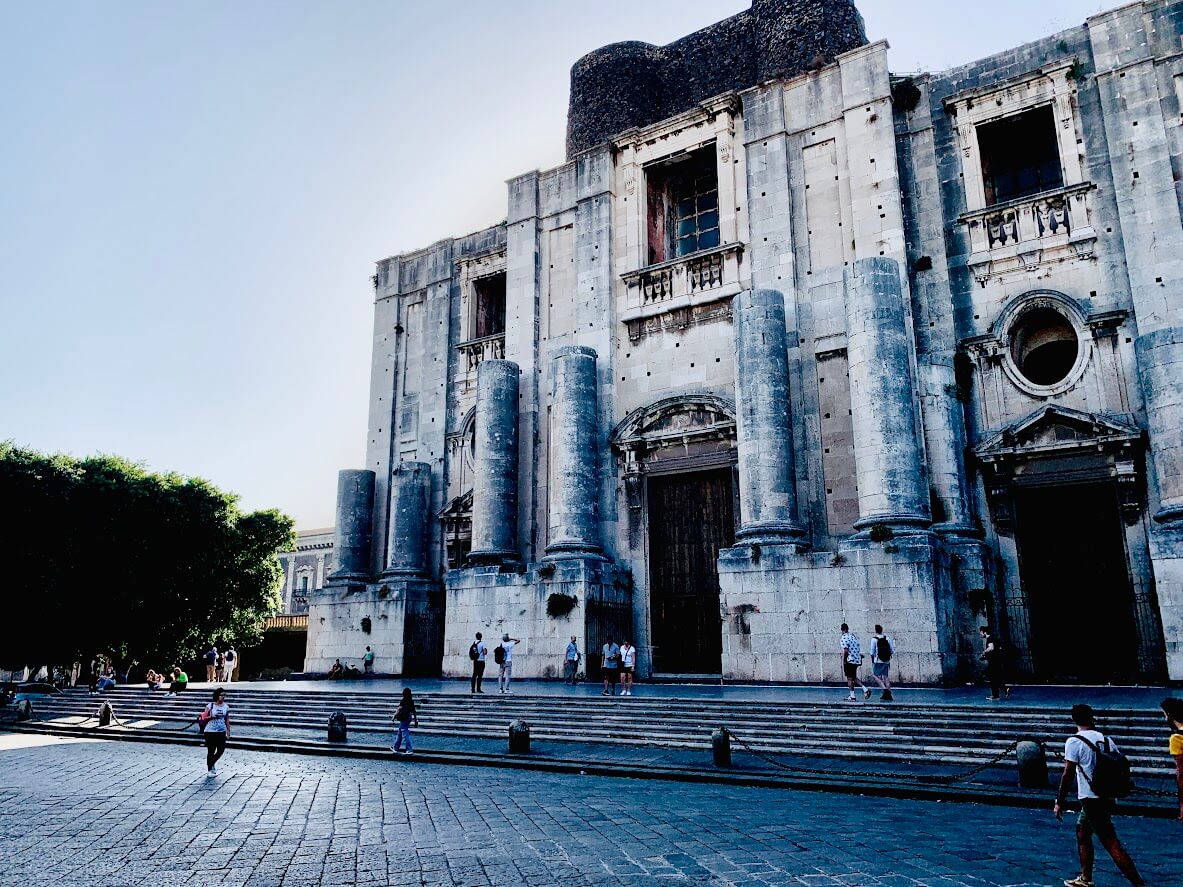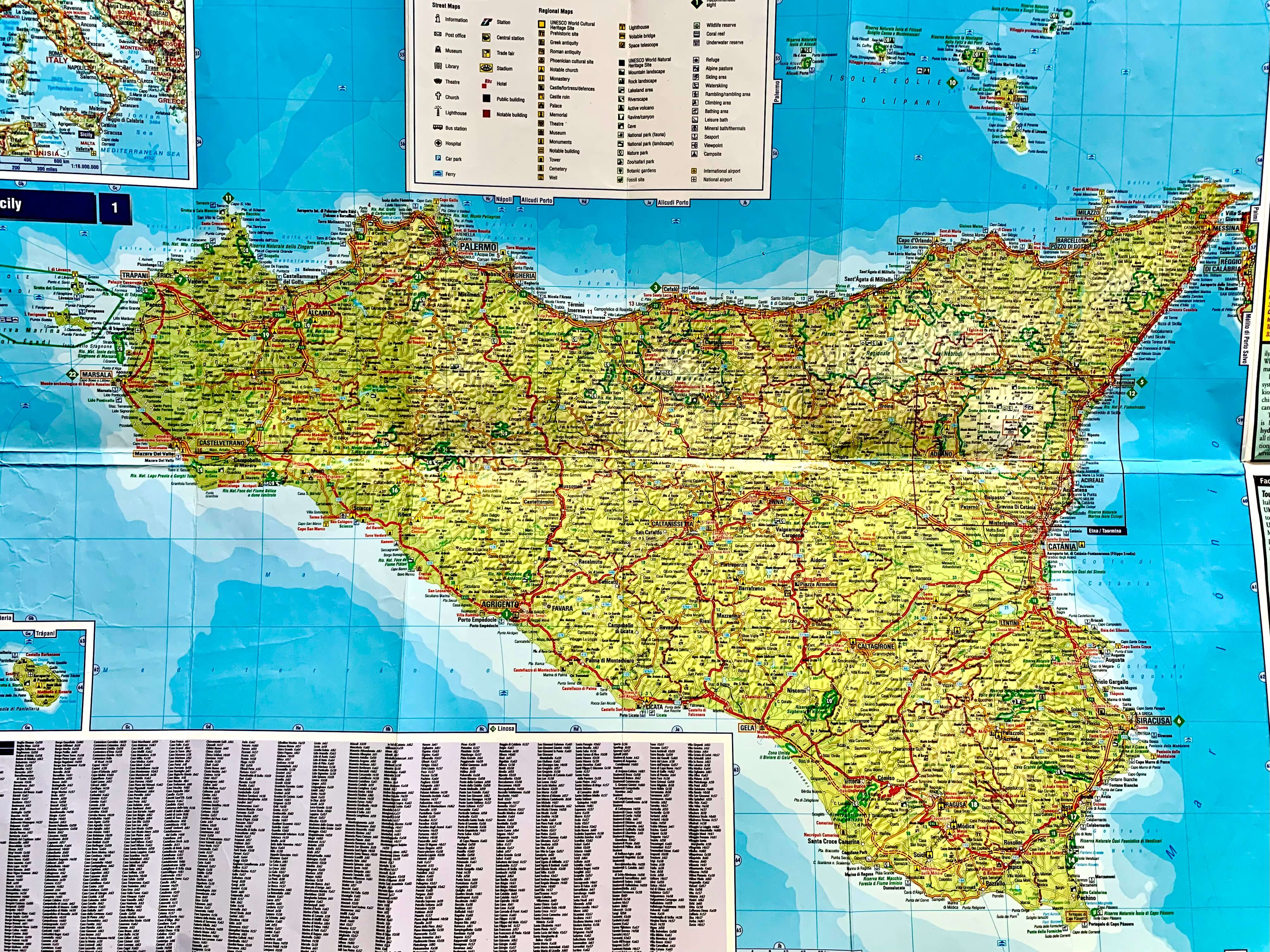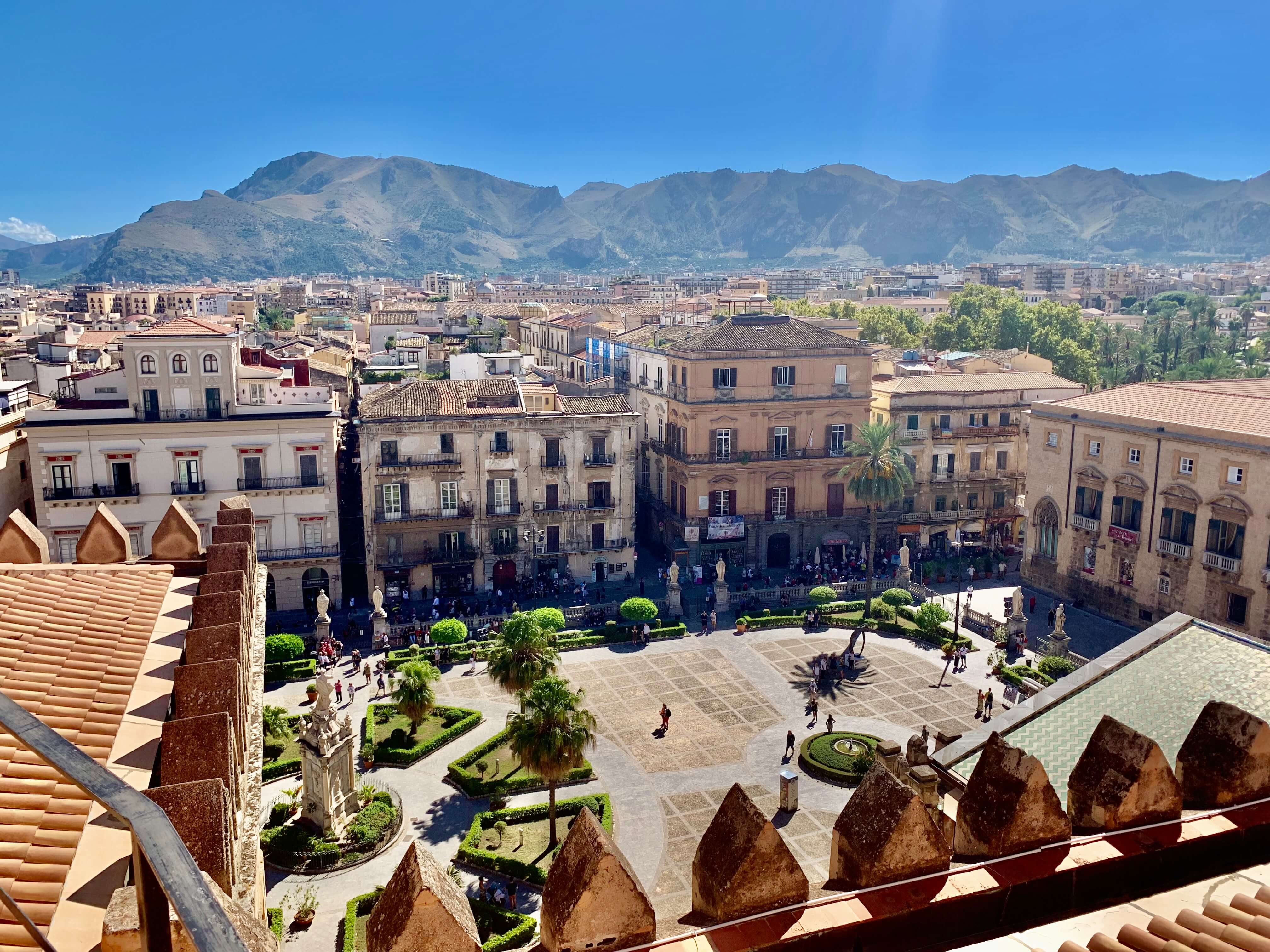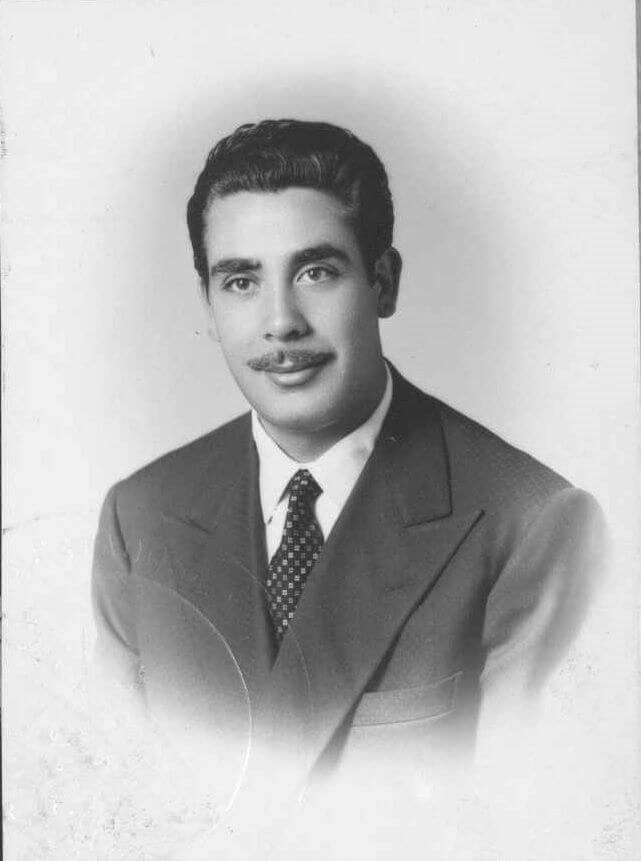- Home
- Main Cities in Sicily
- Catania
things to do in catania, sicily
Beneath the Rough Surface Beats a Warm Heart
Catania is close to the popular tourist destinations of Sicily's east coast. Etna, Taormina, and Syracuse are close by. It's also home to one of Sicily's international airports.
Catania can seem a bit rough at first, but when you get past the first impressions, you might find a very warm core underneath.
Catania was one of the first settlements in Sicily. Today, it is the second largest city, second only to Palermo.
Like in many other towns in eastern Sicily, the giant earthquake of 1693 wreaked havoc here too. And, like many other destroyed towns, Catania was also rebuilt in the Baroque style.
Unfortunately, Catania suffered further destruction in the WW2. The city was bombed on a massive scale and is therefore not as beautiful as other baroque cities.
When arriving, the first impressions are chaotic. The city reminds me of Naples on a smaller scale. Still, amongst the chaos, there are gems to be found. Catania has everything you could wish for and is well-connected to the rest of Sicily.
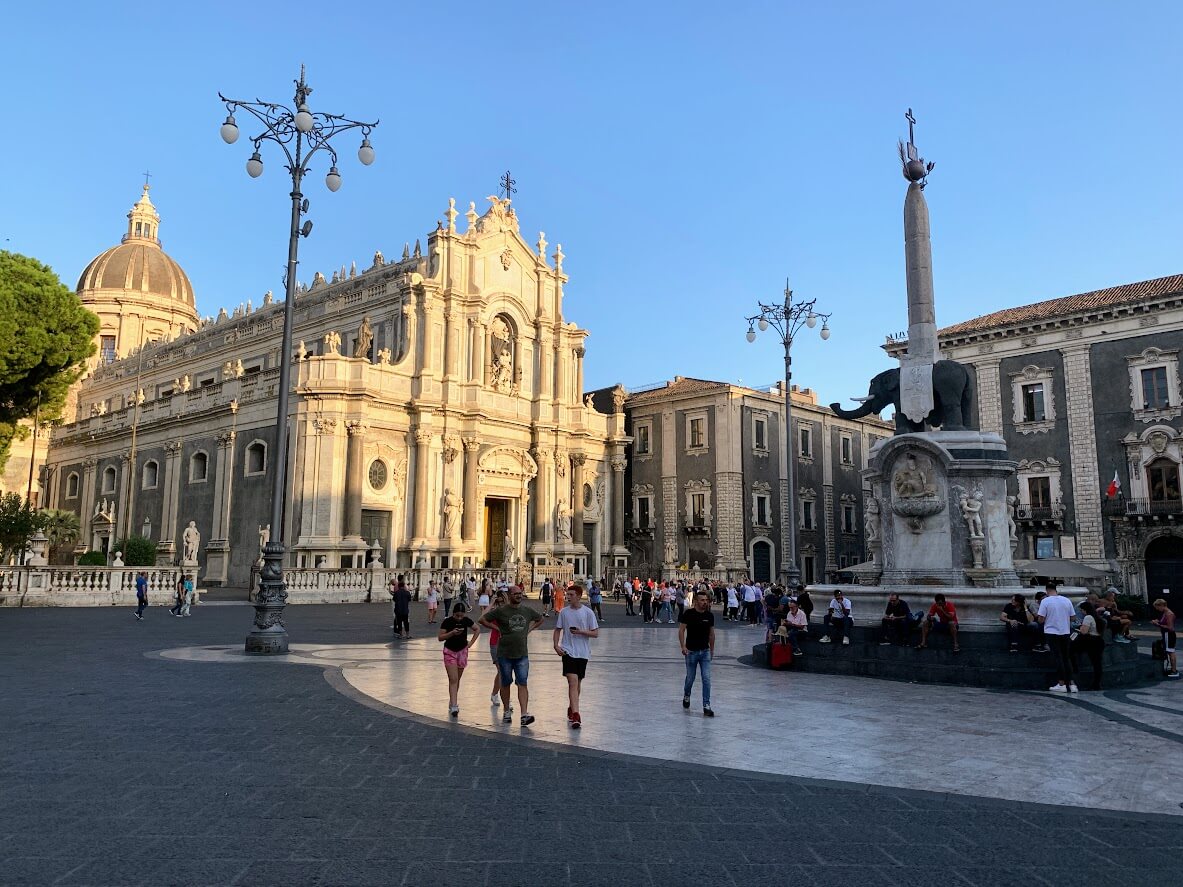 Piazza Duomo in Catania.
Piazza Duomo in Catania.Catania-Fontanarossa Airport
Many arrive in Catania by plane. Catania-Fontanarossa is one of the two international airports in Sicily. Another one is in Palermo.
Catania airport is not very large. Yet it is Sicily's busiest airport and Italy's fourth busiest airport. The route between Catania and Rome is the most used in Italy.
Fontanarossa airport lies a few kilometers (2.6 miles) southwest of Catania city center. You can cover the distance either by taxi or airport bus. You find them both right in front of the airport.
There are also long-distance buses from the airport to places like Taormina, Agrigento, and Palermo.
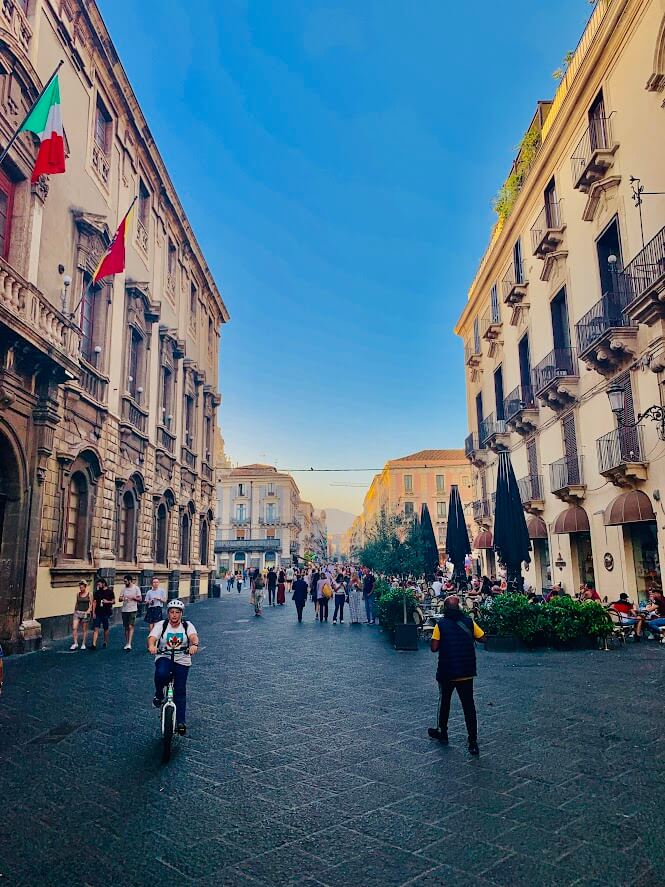 Catania's historical center.
Catania's historical center.My First Experience of Catania
The first time I arrived in Catania was by train from Syracuse. The impression from the train window was shabby. The orange groves gave way to gloomy apartment blocks. Their dark windows stared like empty eyes to the trashy piazzas.
I later learned that the darkness of the houses isn´t due to humidity - as I thought - but because they are built of lava rock.
On reaching the railway station, we walked towards the center. The bus station is near the railway station, so the walk is about the same.
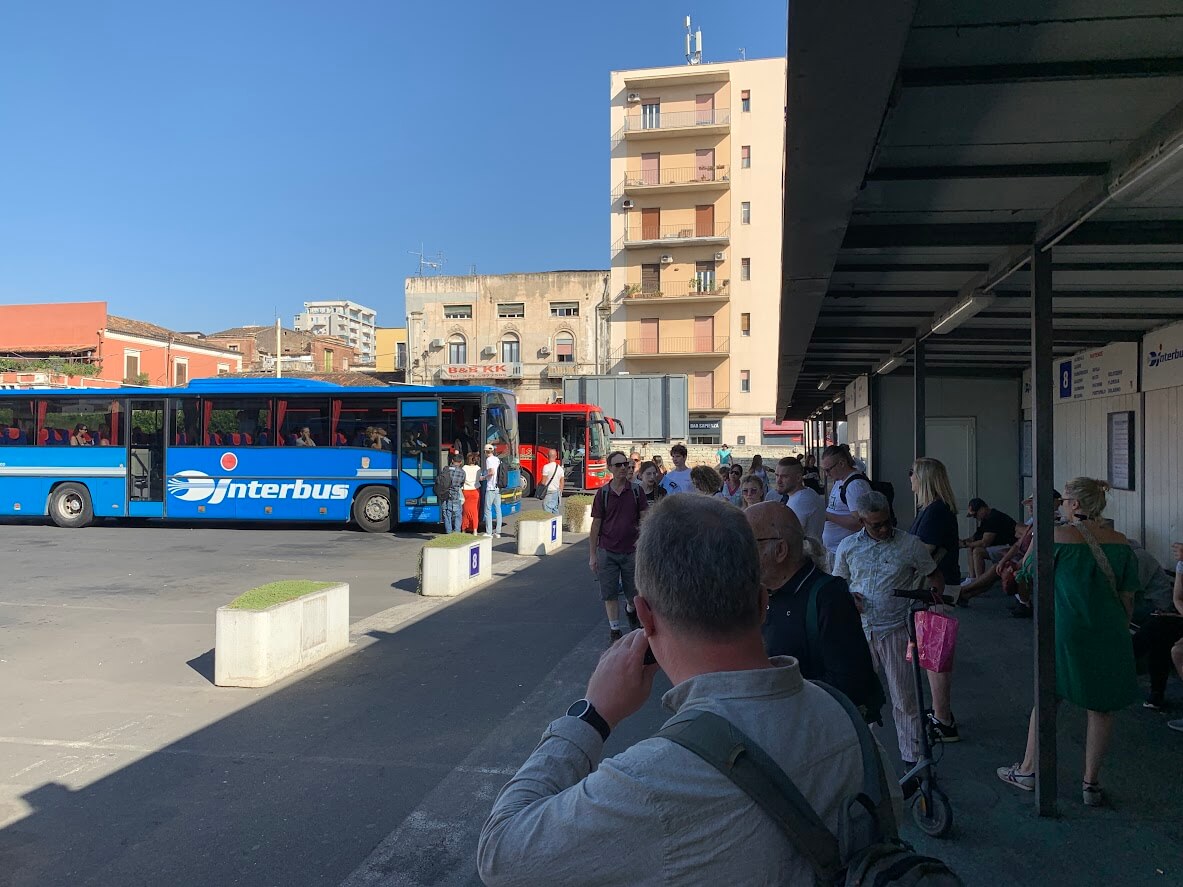 Catania bus station.
Catania bus station.The walk towards the historical center might spook someone who doesn't know what to expect. There might be trash on the streets. Immigrants are hanging around in the corners. Clumsy graffiti on the walls, broken up Vespas...
But once you arrive in the city center, things get better. More tourists, more cafes. Wide streets. Lots of shops and restaurants.
Catania is not a city that embraces you unconditionally the moment you arrive. You have to earn it. But, if you learn to love it, it will reward you royally.
If the diversity of people is rich, so is the variety of things to do in Catania. There are all kinds of cafés, restaurants, and shops. All within walking distance of each other.
You can see all the main sights of Catania in one day. So the city is also a good day trip destination.
Another option is to use it as a base for touring other attractions in the surrounding area. This allows you to immerse yourself more in local life.
So, here are some...
Things to Do in Catania:
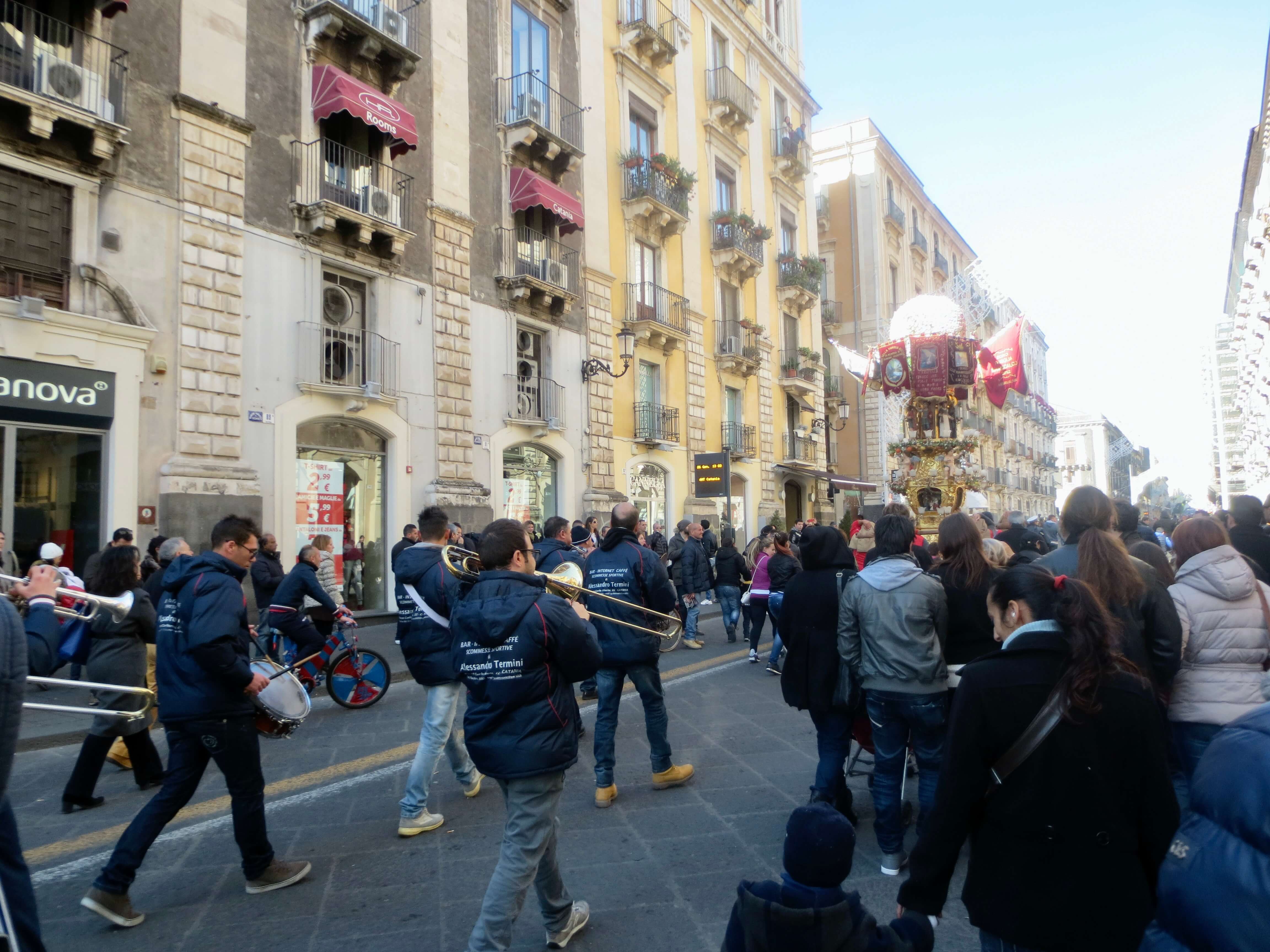
1. Marvel at the General Atmosphere of the City and Its People
Catania has a strange effect on my head. It's a bit like being caught in a vortex. At first, everything seems to be under control, but after a couple of days, my head starts to spin.
There are so many strange things happening in the city all the time that the attractions themselves are in danger of being left behind.
So I put the city and its people as the number one thing on my list of things to do in Catania. There are some of the most extraordinary personalities in this town.
It doesn't matter if you stop at the terrace of a café or at a local watering hole. There's always something to marvel at.
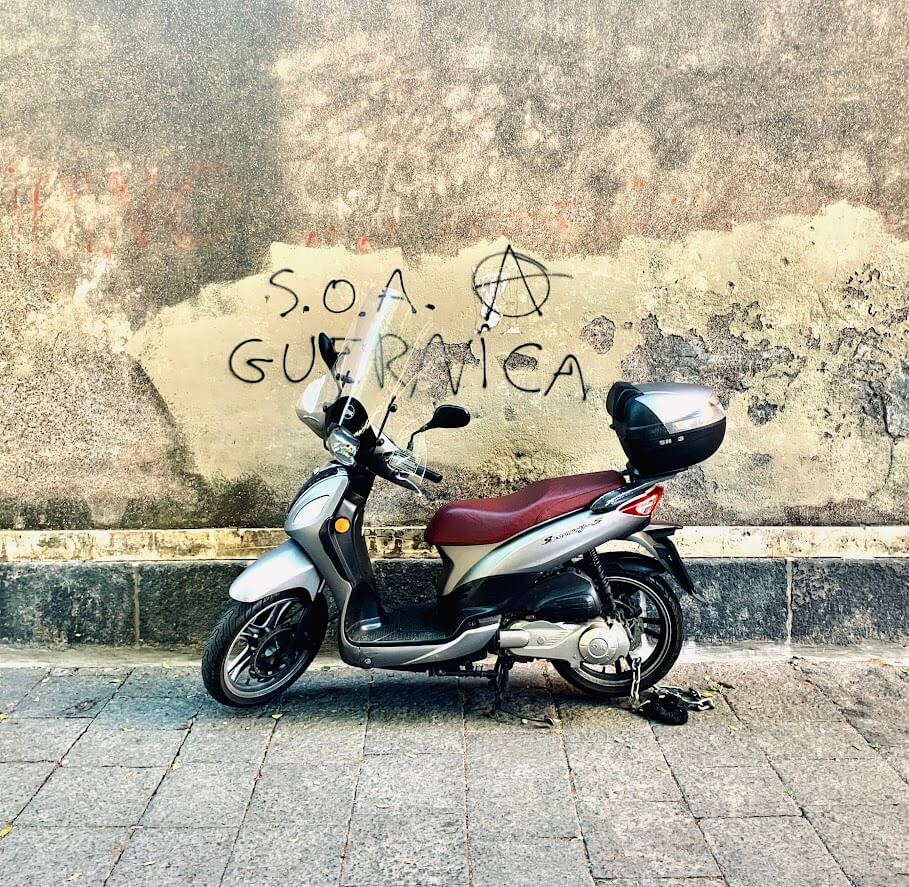 Sons of Anarchy, Catania chapter?
Sons of Anarchy, Catania chapter?2. Visit Mount Etna - on Railway or Otherwise
If you want to drive/climb to Mount Etna's top, take a look at my Etna page. If you are interested in the towns and villages on the slopes of the mountain, you can also take Circumetnea railway.
It's a local train that goes around the volcano of Etna. We toured the track in a day. It cost next to nothing. Along the way, we stopped in a few towns. Like Bronte, known for its pistachios.
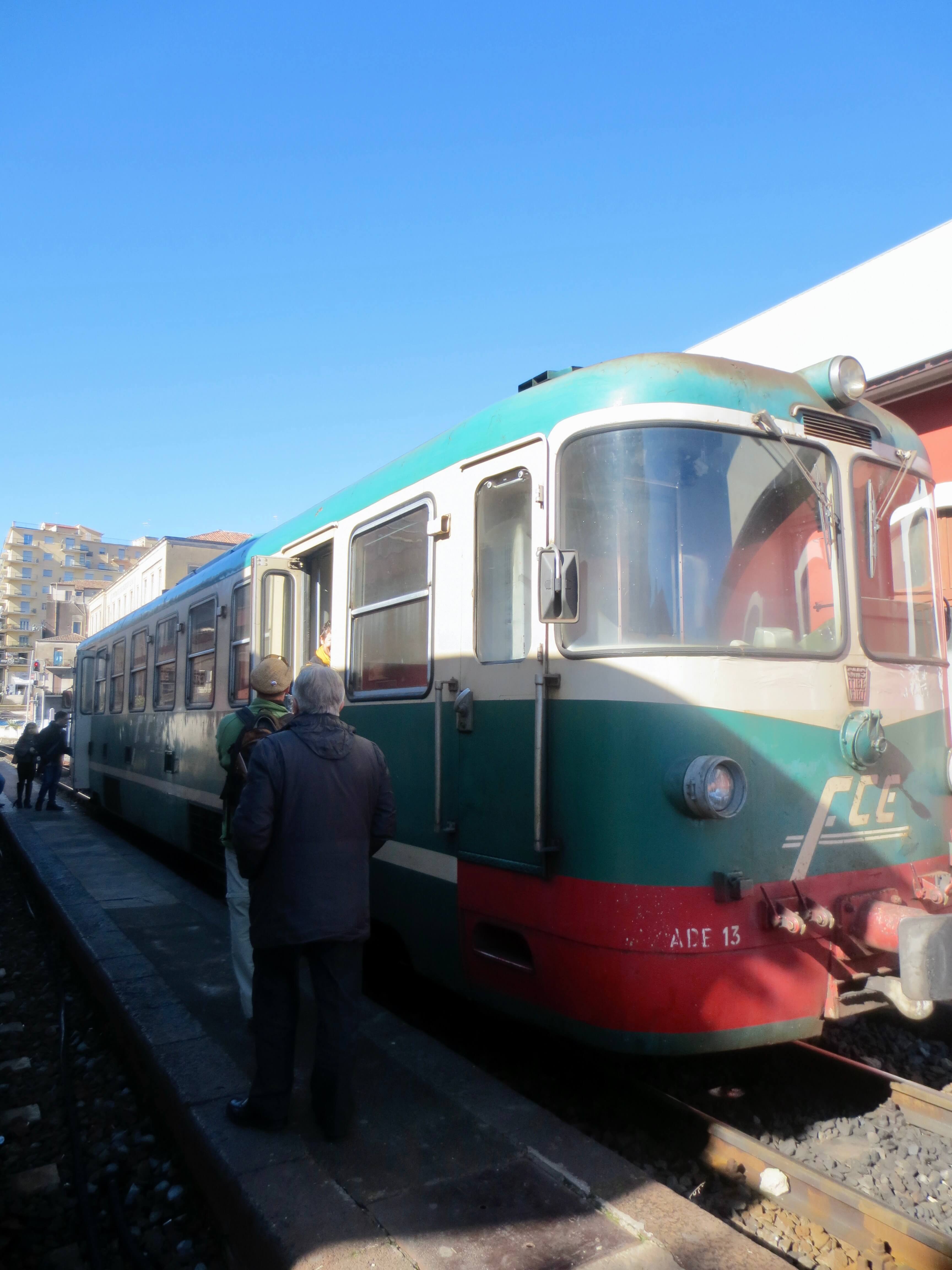 Circumetnea train station is a short walk from the center.
Circumetnea train station is a short walk from the center.By the time we got back to Catania, it was already dark. Mount Etna was very much active. We watched from the train window as the lava flowed towards the towns above us. There was no sign of anybody leaving their homes or anything. Just an ordinary day for the local people. I found it quite amazing.
In the mountain villages, the air was cool and fresh. Church bells were ringing. People were going about their business.
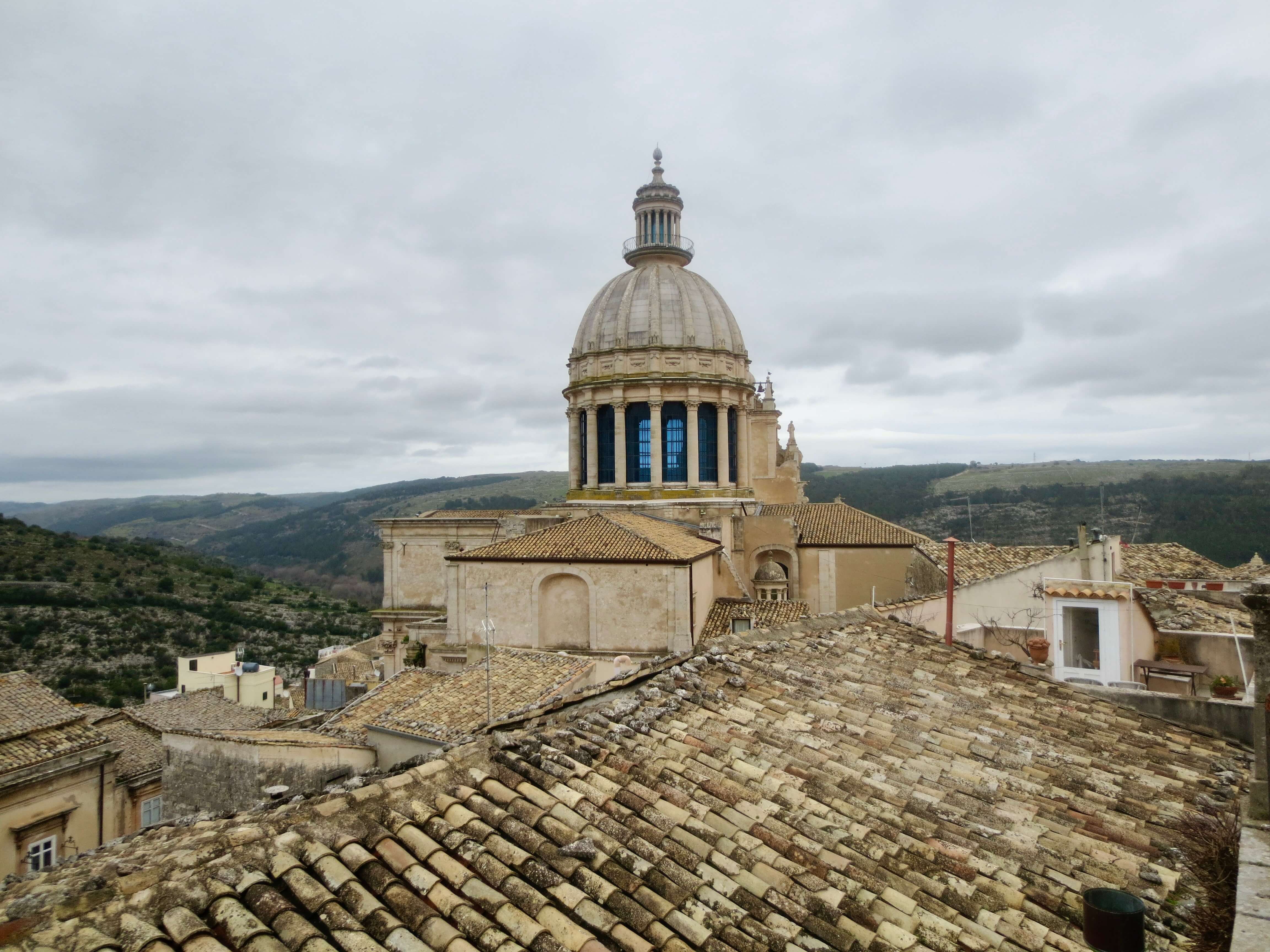 I'm unsure what town this picture is from, but I'd guess Bronte.
I'm unsure what town this picture is from, but I'd guess Bronte.The towns on the Etna slope are also good places to buy local produce. They produce wine and grow pistachios, among other things.
So it's a good place for cheap shopping. The atmosphere was peaceful, which was a good break from the buzz of Catania.
3. See a Roman Theatre in the Middle of Apartment Blocks
All visitors to Italy have been to these ancient theatres before. But this is different. The theatre is situated on Via Vittoria Emanuele II, 266.
First of all, you can't see the place from the outside. The theatre is squeezed between apartment blocks. From the street, the place looks like any other building.
The theatre itself was designed for 7,000 spectators. One can only wonder how they have managed to fit in and what the atmosphere would've been like.
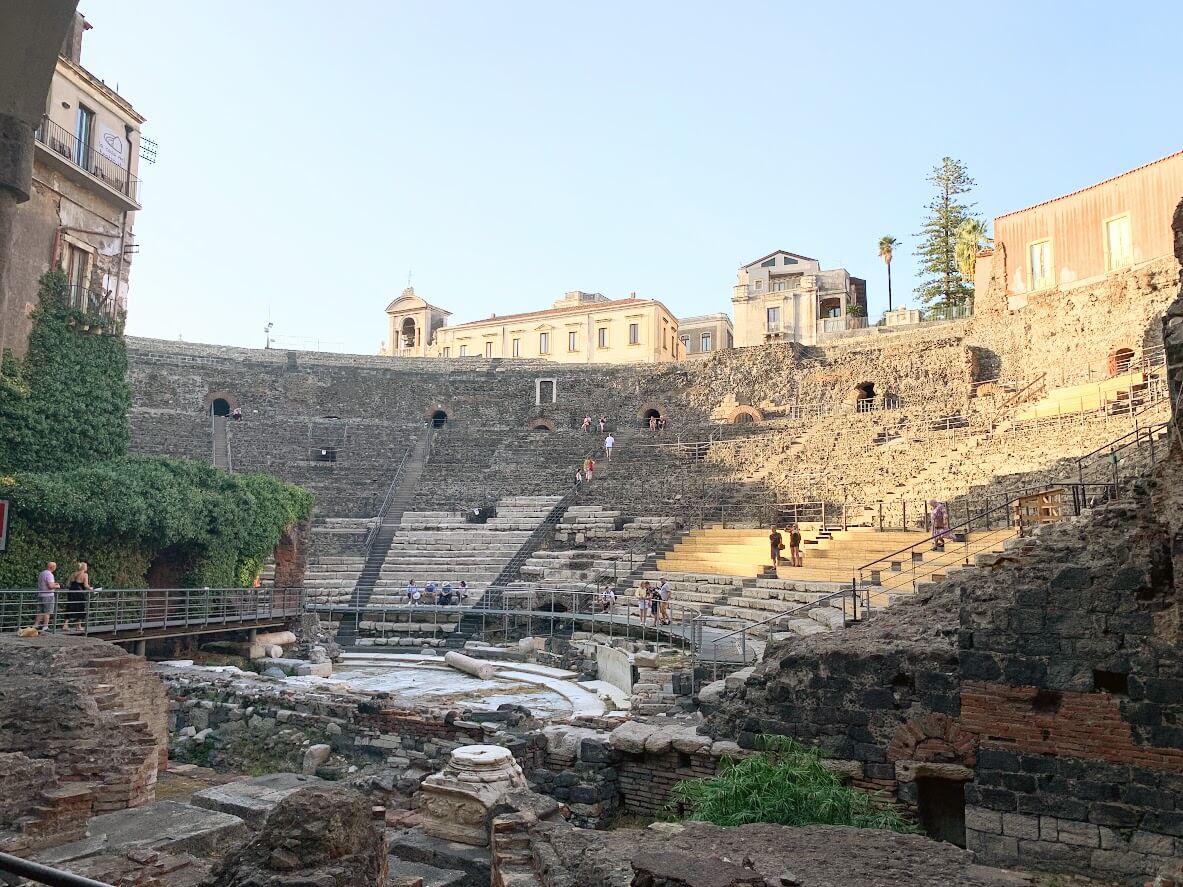 Catania Roman Theatre.
Catania Roman Theatre.The first time we were there was in the middle of winter. There were no other visitors. Besides us, the only ones admiring the theatre were a bunch of stray cats.
The orchestra pit was full of water. I later learned that this comes from an underground river under the theatre.
When we visited the theatre the second time, the water was gone. Then again, it was in the early autumn, after a hot summer. Maybe that had something to do with it.
There is a place to buy souvenirs at the entrance.
All in all, a bit out of the ordinary, and definitely worth a visit.
4. Rest Your Nerves on the Grounds of a Benedictine Monastery
If you need peace from the hustle and bustle of the city, you can head to the Benedictine monastery. It is a short walk from the Roman Theatre mentioned above. Both are also near the main cathedral, so you can easily combine these in one walk.
The grounds of the monastery have peaceful courtyards and gardens. The monastery itself is now run by the university, which is why you'll see students hanging around the site.
Many places on the monastery grounds are open to visitors only with guided tours. These start from the shop right next to the entrance, inside the gate.
The monastery is one of the largest of its kind in Europe.
The church attached to the monastery is the largest of its kind in Sicily. You can take a guided tour of it, as well as the ancient Roman house in the area.
5. Visit Catania Cathedral
The Normans built first version of Catania Cathedral as early as the 1000s. Since then it has been destroyed and rebuilt many times.
The earthquake of 1693 caused the most massive destruction. It wiped out pretty much everything on this part of the island.
Inside the building are still columns and arches from the Norman church. The rest of the church - including the exterior - is of a later date.
Of all the things to do in Catania, this is one of the places you should visit.
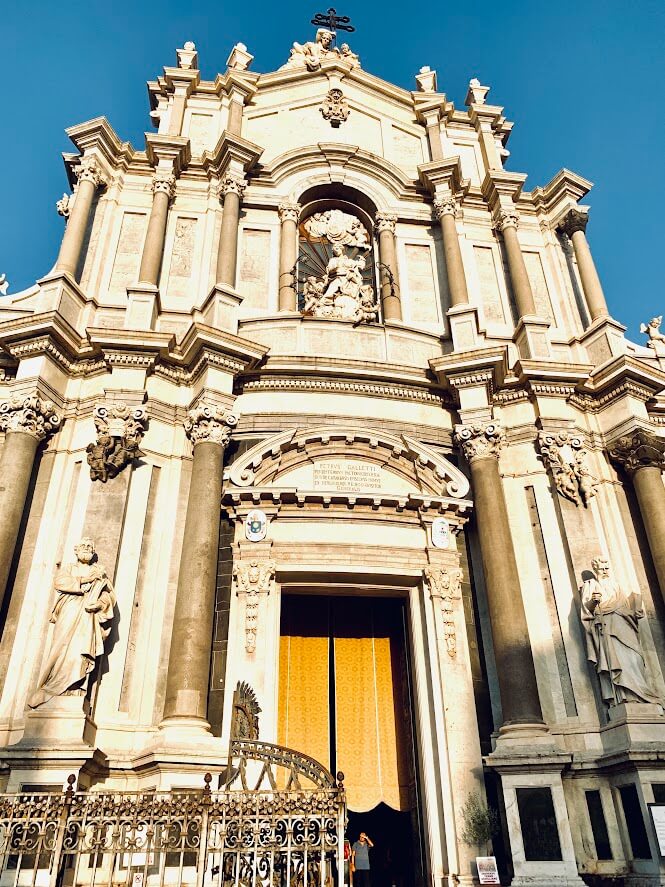 Catania Cathedral.
Catania Cathedral.The cathedral is dedicated to the patron saint of Catania, Sant' Agata.
Agata was a maiden who suffered for her faith. She refused to marry a Roman official. For that, the officers of Roman law put her into a brothel, cut her breasts away, and made an attempt to execute her.
According to the legend, her breasts grew back, and a volcanic eruption interrupted the execution. Angered by this, the Romans threw Agata into prison. There, she eventually died.
One interesting curiosity in the church is a fresco made by contemporary witnesses. It depicts events during the volcanic eruption in Catania in 1669.
At the time the lava flowed right up to the city gates, destroying several villages along the way. That eruption also foreshadowed a major earthquake to come.
The piazza opposite the cathedral is a great place to enjoy the most charming aspects of Catania. You can stop there for a cup of coffee and a delicious pastry.
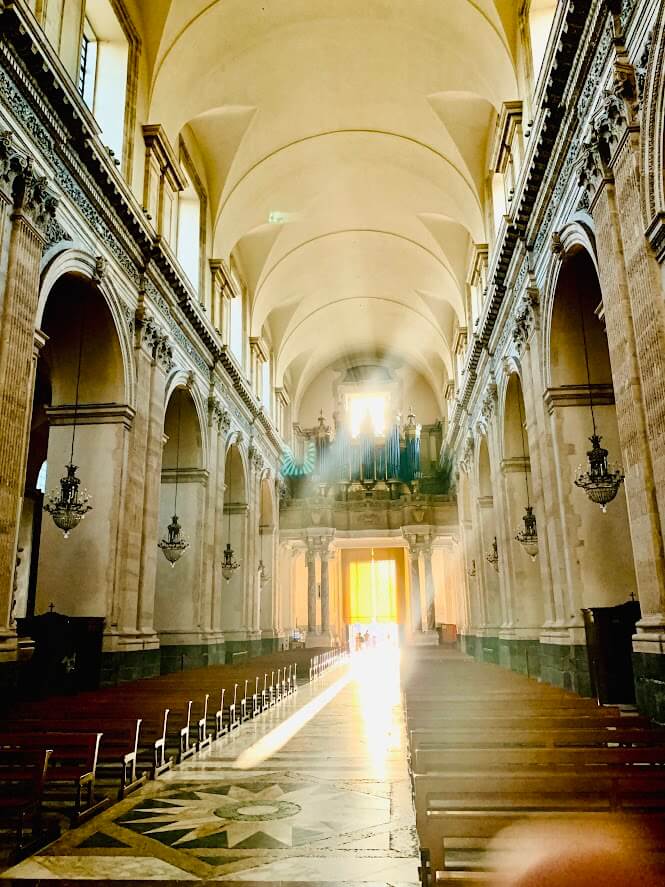 Inside Catania Cathedral.
Inside Catania Cathedral.6. Sample Tastings, Marvel at the Atmosphere, and Do Some Shopping in the Market
A visit to a market is one of the main things to do in Catania. The market is open from Monday to Saturday, from 8.00 to 14.00. I think you better head there first thing in the morning.
It is a lively place with a wide variety of food: fish, meat, vegetables, fruit, and cheese - as well as clothes and some other stuff. On foods, choices vary according to the season.
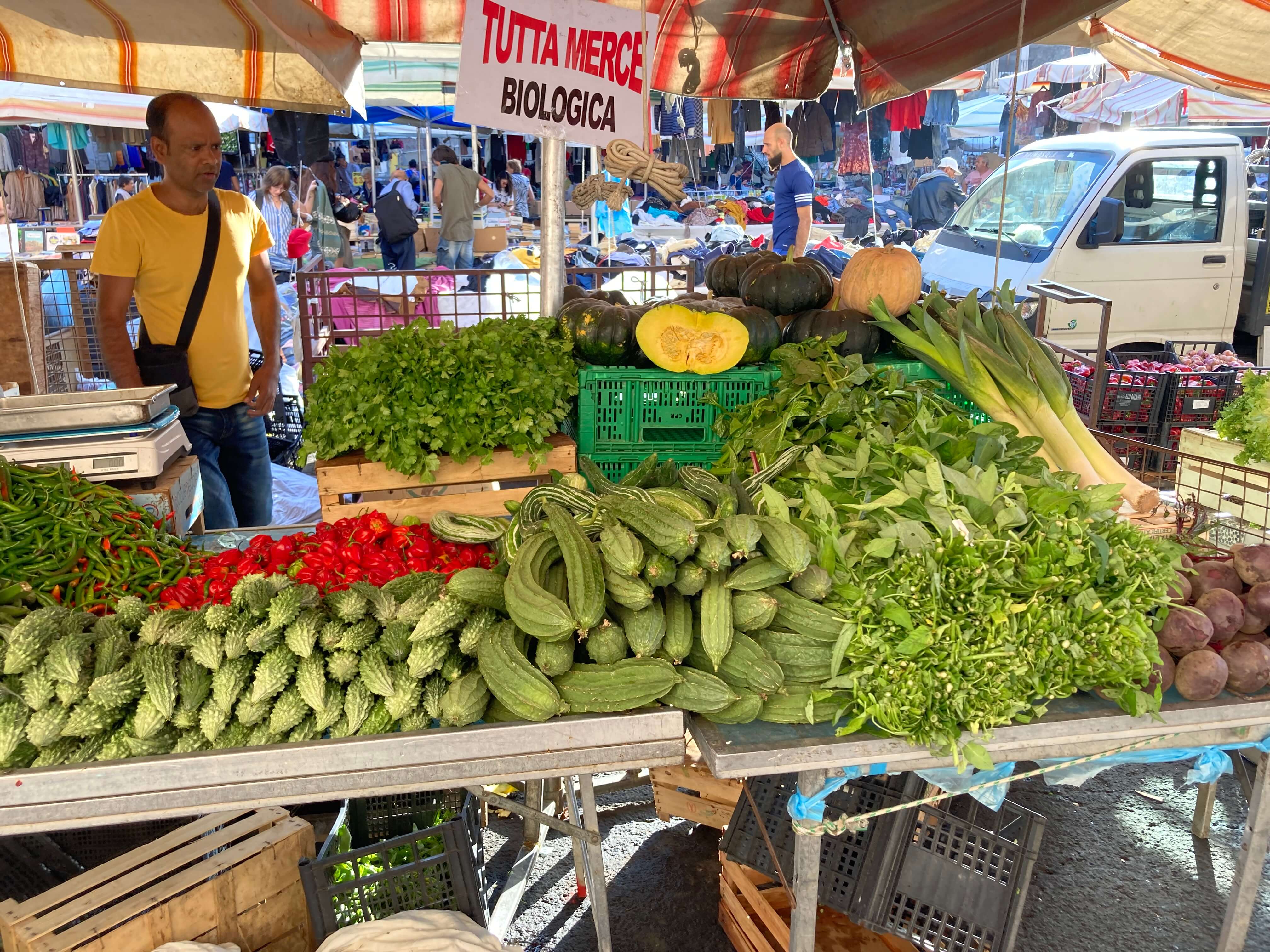 Catania Market.
Catania Market.Like everything in Catania, the market can be a somewhat overwhelming experience. The singing call of the vendors dates back to Arabic times, a thousand years ago.
In the fish market, you can marvel at the variety of seafood. Most of them are completely unknown, at least to me. You can ask for a taste if you dare.
7. Visit The Historical Museum of the Landing in Sicily 1943
If you're interested in history - especially military history - here's a great place to check out. The museum is dedicated to "Operation Husky", the Allied invasion of Sicily. This took place during the Second World War.
At the time, Sicily was the first stage of the Allied march to mainland Italy.
The museum is a short walk from the railway station, in the Ciminiere Cultural Centre.
You can enjoy the museum even if you are not that interested in World War II. Or war in general.
It is not a traditional museum tour. There's a wide range of original artefacts and the main focus is on the holistic experience.
The tour starts with a 12-minute film clip that explains Italy's role in the Second World War. The background of Operation Husky is explained.
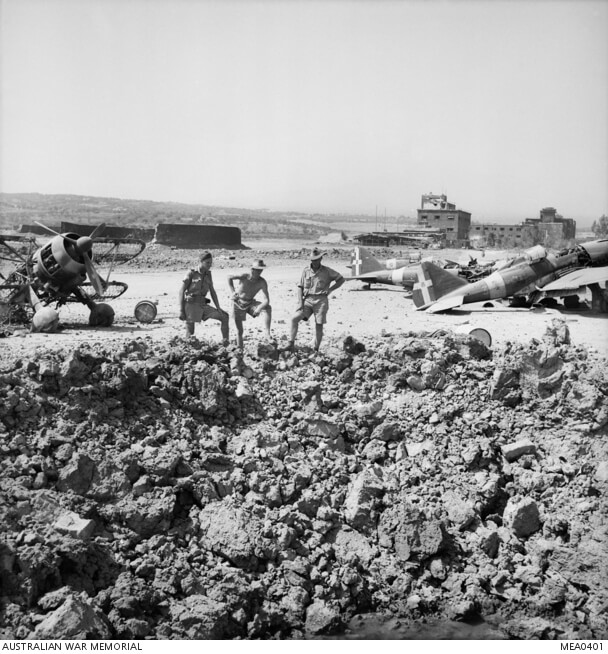 Bombings in Catania in WWII were exceptionally devastating.
Bombings in Catania in WWII were exceptionally devastating.It was then that the Allied forces led by Generals Patton (USA) and Montgomery (UK) landed at Gela and Syracuse. The date was 9 July 1943.
In a little over a month, Allied forces had captured Sicily. The march towards mainland Italy could begin. It was a turning point in the course of the Second World War.
The Museum of the Landing in Sicily 1943 is a great way to get in touch with that time. The perspective is very much Italian. What was life like in this country at that time?
You can walk into a piazza from that era, where Mussolini gave his speech. You can experience the bombing in an air raid. And see the destruction those bombings made.
So, it's quite an experience.
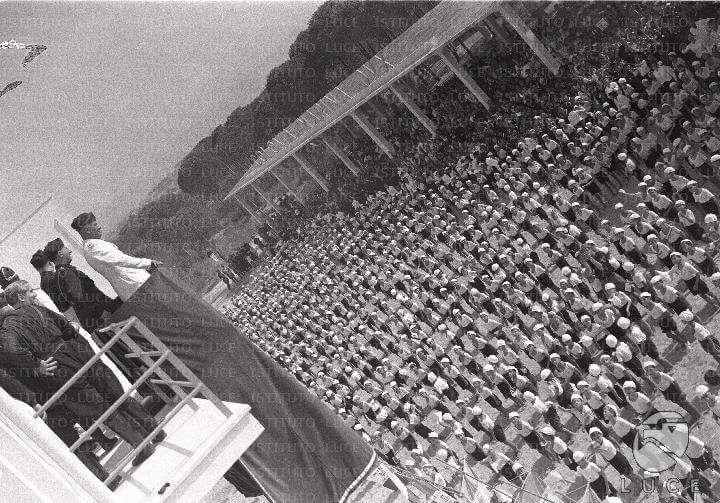 Mussolini giving a speech in Catania. He wasn't that liked in Sicily.
Mussolini giving a speech in Catania. He wasn't that liked in Sicily.8. Admire the Baroque Splendor of Palazzo Biscari
Baroque is an extravagant architectural style with an overabundance of detail. It is common in eastern Sicily.
Palazzo Biscari is one of the best examples of this style in Catania. A striking spectacle right in the center of the city, near the cathedral.
The palace is spread over several blocks and comprises 700 rooms. The princes of Biscari were the original owners of the palace. Their descendants still live there today.
Goethe once visited the palace to meet the prince who lived there.
You can book a guided tour of the palace, which takes half an hour. Tours are available in English and Italian and are led by a genuine descendant of the Biscari family.
For more information, please visit the palace website. There, you can also contact them by e-mail.
In the palace, you can feel the atmosphere of the past and marvel at the living conditions of the wealthy.
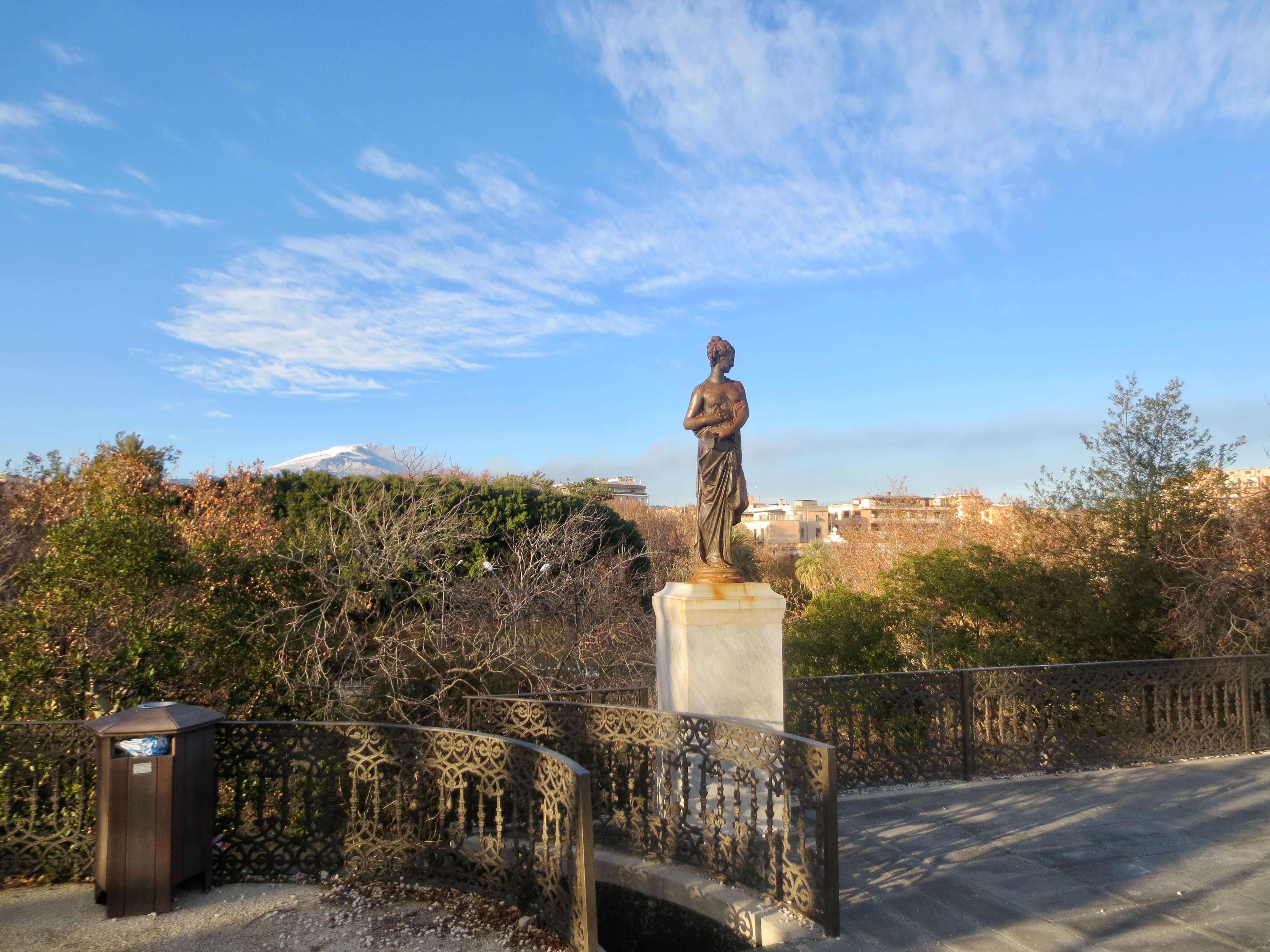 View from Catania park, with Mount Etna looming in the background.
View from Catania park, with Mount Etna looming in the background.9. Shop and Enjoy the Nightlife on Via Zappalà Gemelli
This is the traditional way to shop in Catania - besides the market.
The Sicilian way is to buy necessities on the same day as you make your food, so they are sure to be fresh. And this is a good place to come to do that shopping.
Prefer the traditional, avoid the supermarkets! There are plenty of stalls and shops along the street where you can do your shopping.
The prices are reasonable, the atmosphere is good. There are also plenty of bars and restaurants in the area in the evenings.
The place is open every day except Sunday. And, of course, it's not worth going in the late afternoon. That's when everything is closed, both here and elsewhere in Sicily.
10. Enjoy Life in Piazza del Duomo
In this cozy - and spacious - square, you can spend time and have a coffee.
There are also many attractions on the edge of the square. The most important of these is Catania Cathedral. But in a secluded corner of the square, you will also find the church of Badia di Sant'Agata.
This church is worth a visit for the view from its tower alone. From the top, you can admire the city of Catania, as well as the volcano of Etna, forever lurking in the background.
The Chierici Palace is also located on the edge of the square. From its balcony, Mussolini made his speech when visiting the city.
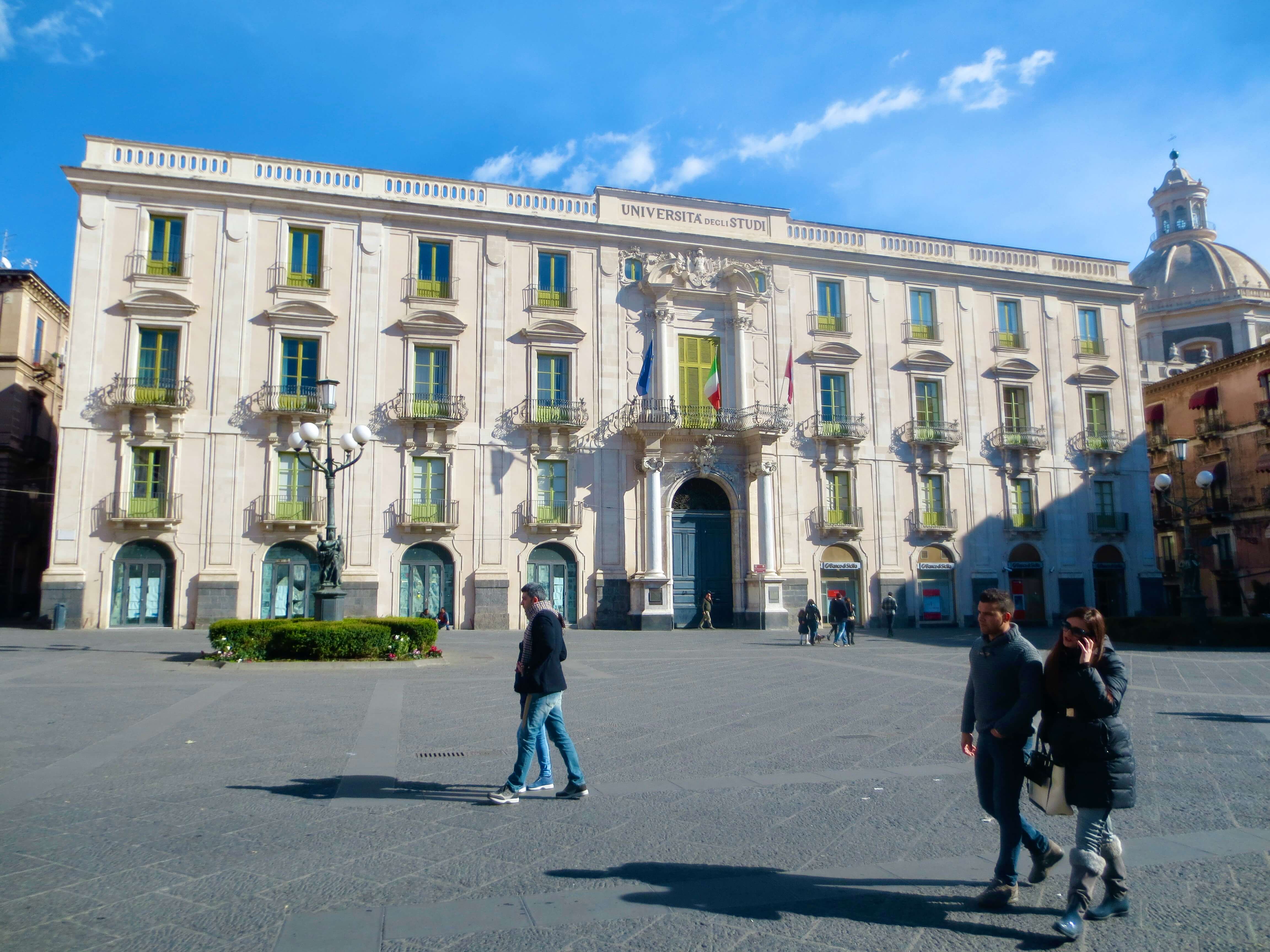
Bonus: Outside the City - Go to the Beach
There are many good beaches near Catania. They offer a change from the hustle and bustle of the city, as well as a chance to take a dip in the warm water. If you're staying in the city for a longer period, it's worth checking them out.
On the other hand, if your intention is mainly to enjoy the beach, you should book accommodation closer to the beaches, say in the direction of Taormina.
Conclusion
Catania is worth at least a day trip - or longer. For an extended stay, the location and services make it a good place to live.
Catania has everything you need within walking distance from each other. It is also well connected to many of Sicily's main attractions. Many of Sicily's famous beaches are also nearby.
There are also plenty of things to do in Catania itself. If you don't have much time, you can get around the main ones in a day.
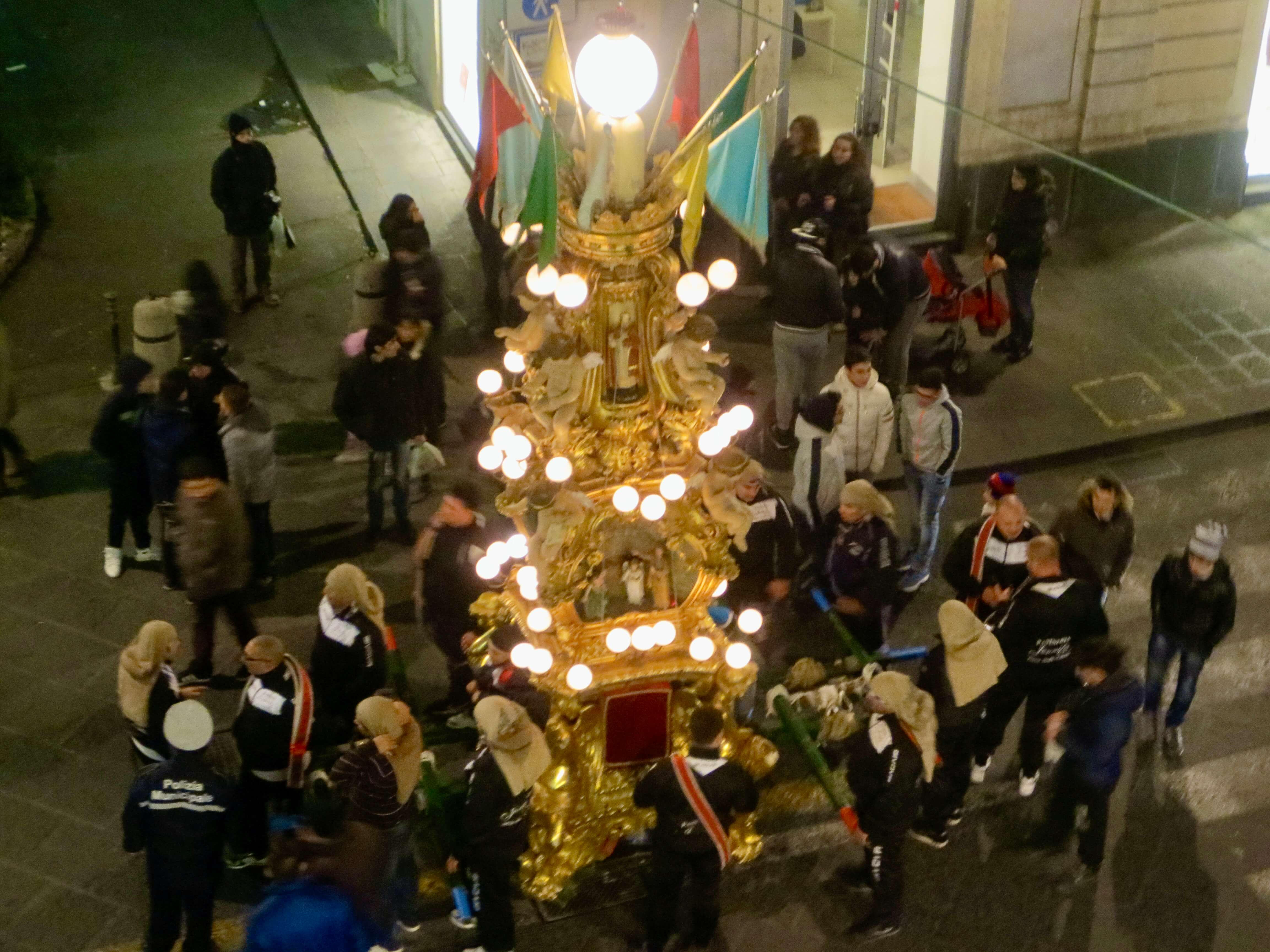 People parading around town during the festival of Saint Agatha.
People parading around town during the festival of Saint Agatha.(Last updated: December 9, 2024.)
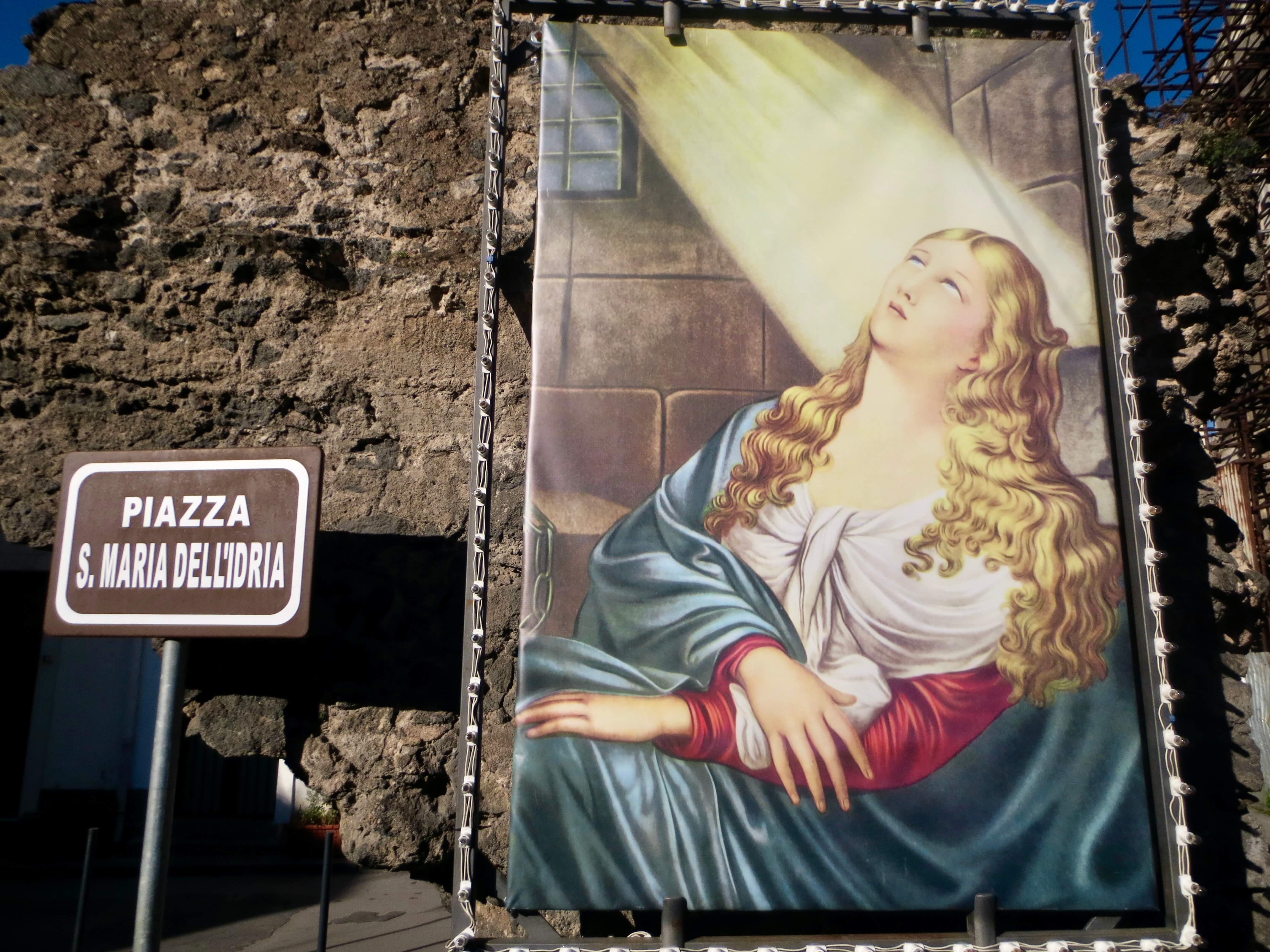 The portrait of Saint Agatha, painted on a wall.
The portrait of Saint Agatha, painted on a wall.Recent Articles
-
Sicilian Food - Rich Flavors, Endless Passion
Apr 09, 25 09:54 AM
All you need to know about Sicilian food, its ingredients and history. -
Things to Do in Palermo - Tips for a Perfect Holiday
Apr 05, 25 04:27 AM
Things to Do in Palermo - From historic landmarks to delicious food, this guide has it all. -
The Story of Tommaso Buscetta: From Mafia Boss to Key Witness
Mar 30, 25 05:12 AM
Tommaso Buscetta built Sicilian Mafia into a global empire - which he then destroyed.
Follow MANY FACES OF SICILY on Facebook, Instagram, Bluesky & Pinterest
Contact: vesa@manyfacesofsicily.com
